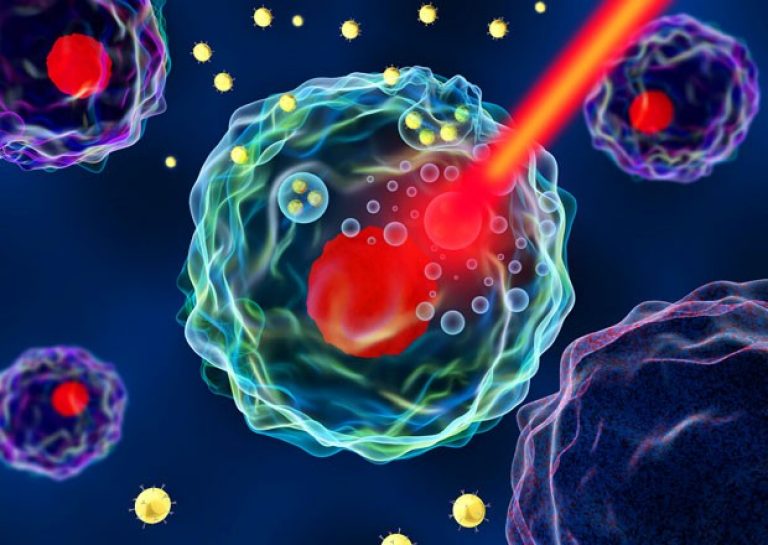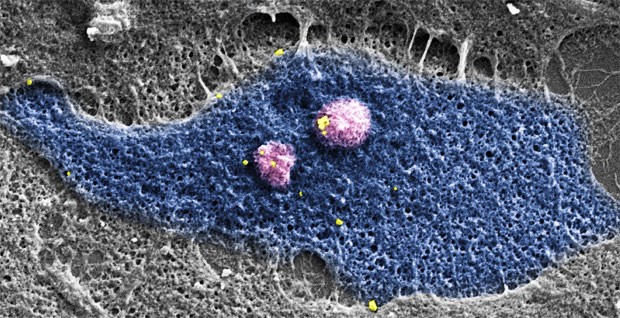Interdisciplinary study finds Ayurvedic medicine may improve chemotherapy

An ancient Indian medical practice is showing promising results in the lab as a potential tool in the fight against cancer.
“We discovered that gold ash, an ingredient that comes from Ayurvedic medicine in India, is able to penetrate the nucleus of human cells,” says Muthukumaran Packirisamy, director of the Optical-Bio Microsystems Laboratory & Concordia Silicon Microfabrication Facility.
“That means gold ash, also known as swarma bhasma, has the potential to be used as a drug-delivery vehicle, improving the chemotherapy of certain drugs and enhancing the capacity of anti-cancer drugs to destroy targeted cells.”
The professor’s findings were recently published on Nature.com. The research was interdisciplinary, involving Alisa Piekny, who is a co-author of the article and director of the Centre for Microscopy and Cellular Imaging at Concordia.
What is Ayurveda?
Ayurveda is a system of natural healing that is native to the Indian subcontinent. Its origins have been traced back to 5,000 BC. The word “ayurveda” means the knowledge of life: ayus means life and veda refers to a system of knowledge.
“It adopts a universal and holistic approach towards health, emphasizing the connection between the body, mind, and spirit,” says Packirisamy, a member of the Royal Society of Canada's College of New Scholars, Artists and Scientists.
“Ayurvedic medicines are bhasmas — metal and mineral preparations treated with herbal juice or decoctions of plants, then repeatedly incinerated.”
Thus, the ash. Gold ash is a popular bhasma containing approximately 50 per cent pure gold. It’s considered to have therapeutic benefits for chronic ailments such as rheumatoid arthritis and diabetes.
Packirisamy’s team decided to expand their knowledge and understanding of gold ash’s physical characteristics and chemical composition using modern instruments.

Gold ash vs. gold nanoparticles
“Because of our special interest in the suitability of pure gold nanoparticles for cancer diagnosis and treatment, we explored the way gold ash interacts with human cancerous and non-cancerous cells, in comparison with chemically synthesized gold nanoparticles,” Packirisamy says.
When the research team put the cells under the microscope — employing scanning electron microscopy and localized surface plasmon resonance (LSPR) — they were surprised to discover gold ash particles were entering human cells.
The gold ash particles are relatively large. Still, they were entering cells and accumulating in their vesicles and in cytosol, outside the nucleus.
“Gold ash was even able to reach the nucleus, under certain conditions,” says Packirisamy. “We found that larger Swarma bhasma particles entered cells via the cell membrane to form a pocket, which then pinches off into the cell to form a vesicle.”
Regular gold nanoparticles can do that too, he notes, but the much larger size of the gold ash particles holds unique promise.
“This means gold ash can carry more weight than synthesized gold nanoparticles and they have the potential to be a better transport vehicle to take medicine into human cells,” he says.
“This study shows the potential of nanoparticles including Swarma bhasma to cure many diseases by their controlled entry into cells.”
Packirisamy’s work bridges the gaps between engineering, biology and science, forging multidisciplinary collaborations. He has dedicated his life to the miniaturization of diagnostic tools used in health care to detect cancer and other illnesses that may be lurking in a person’s bloodstream.
“Our lab is interested in working with industry to translate our technologies into products of diagnostic and therapeutic value.”
Read the cited study: Comparative study on cellular entry of incinerated ancient gold particles (Swarna Bhasma) and chemically synthesized gold particles.
Contact
Public Affairs
514-848-2424, ext. 5068
patrick.lejtenyi@concordia.ca
@ConcordiaUnews




